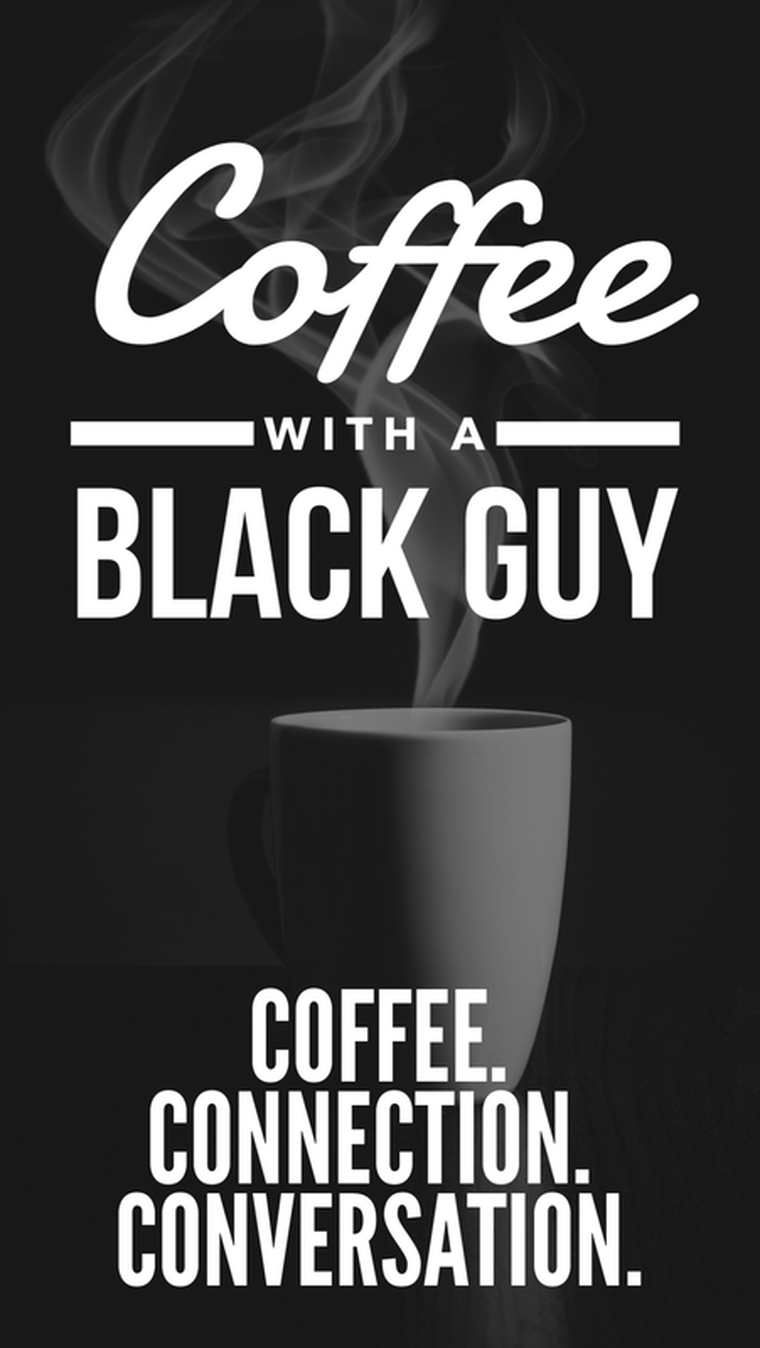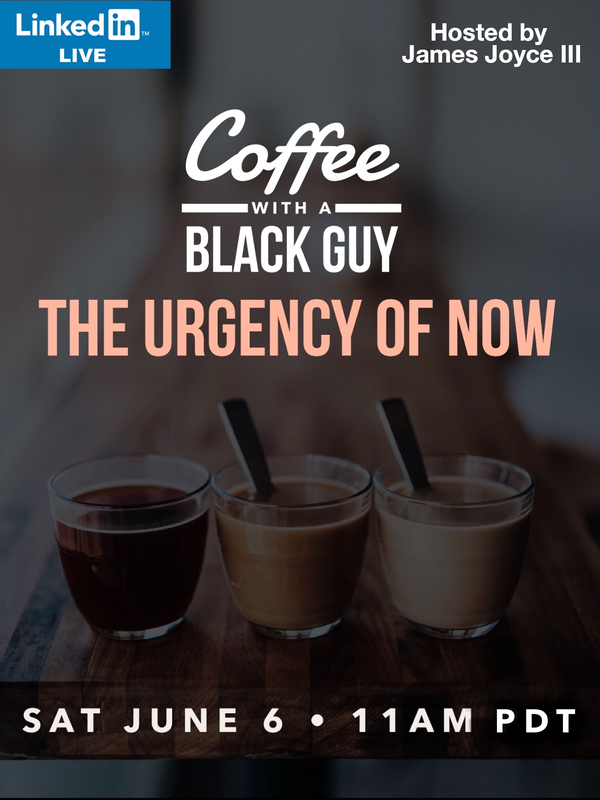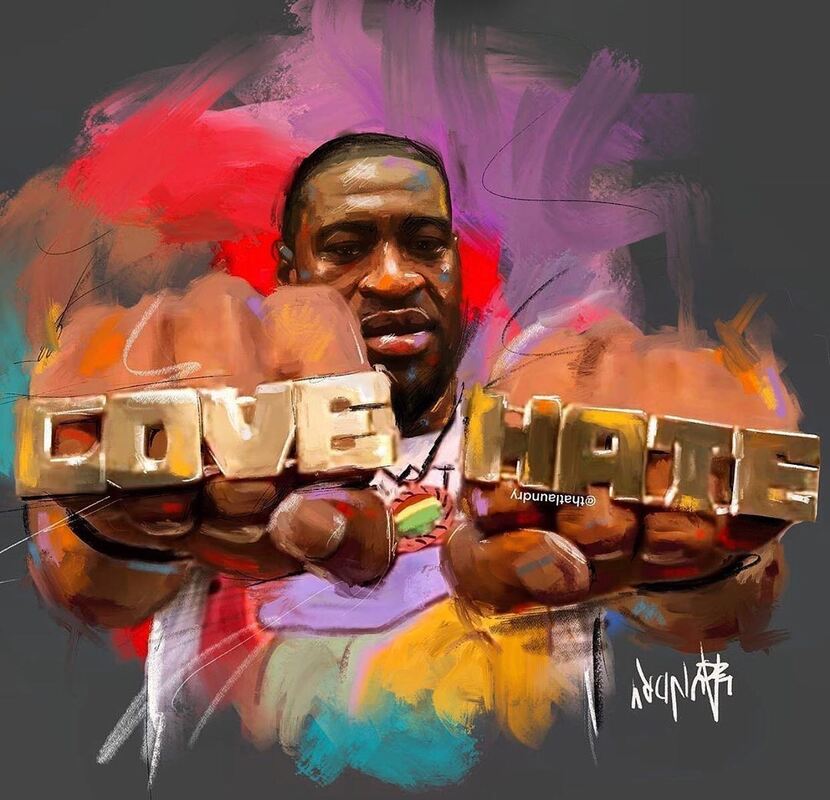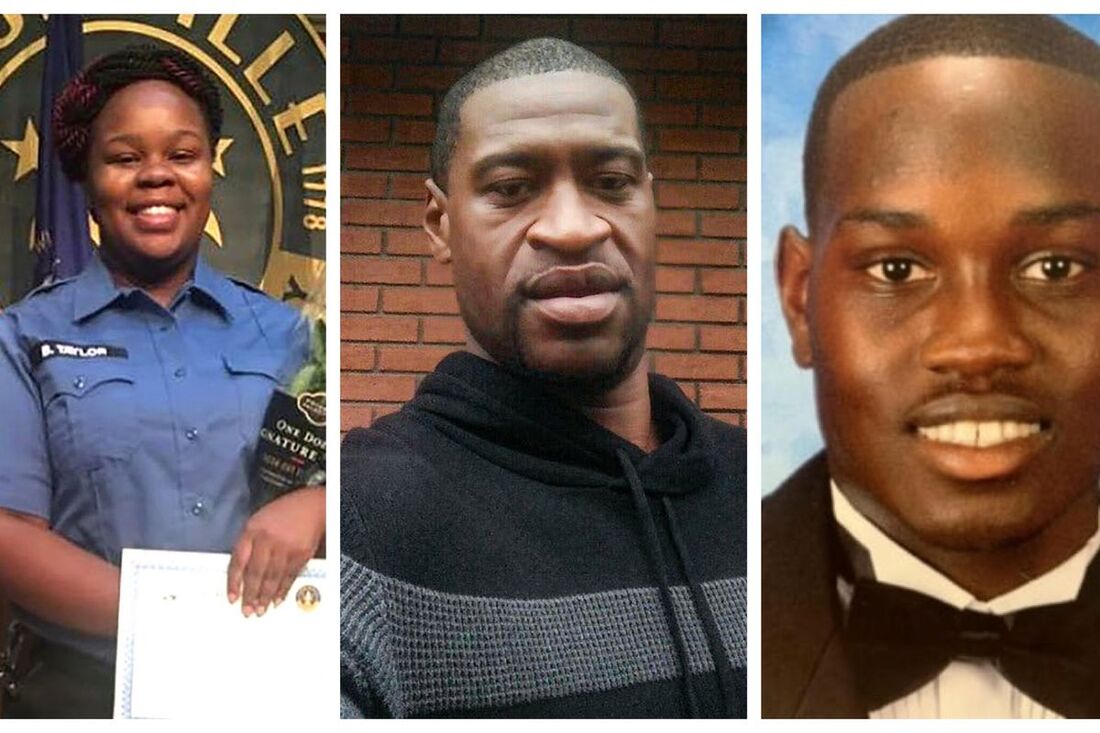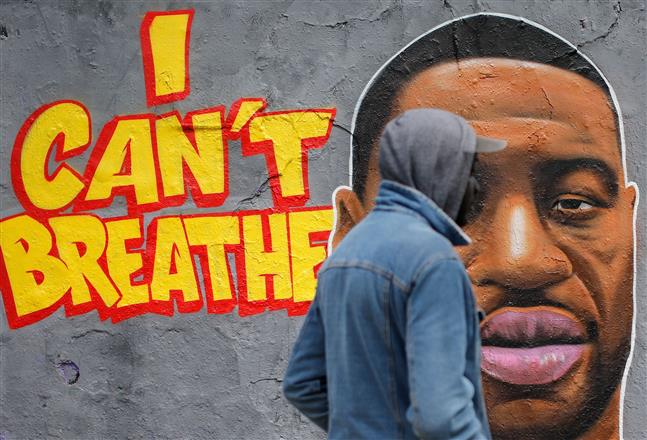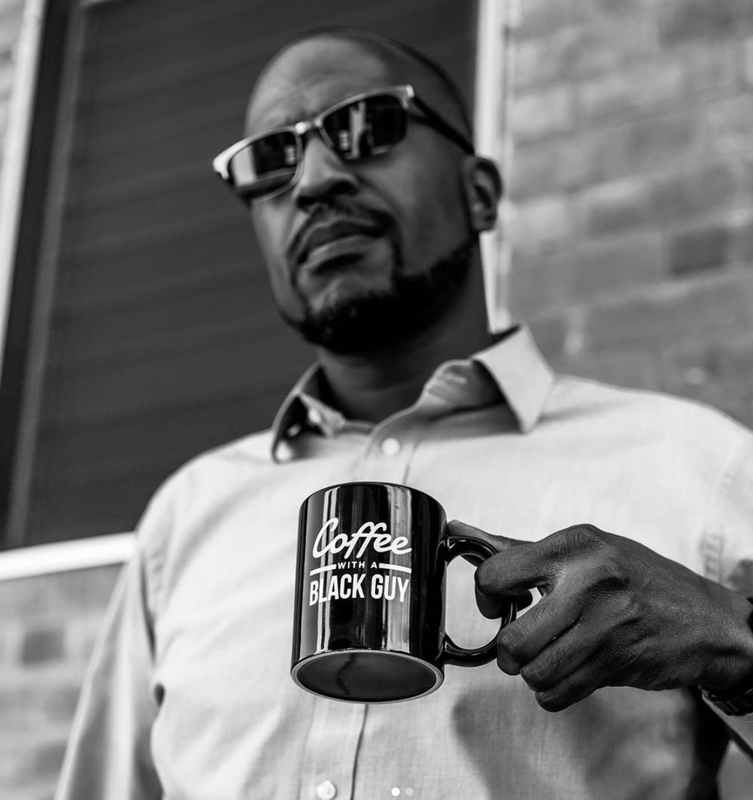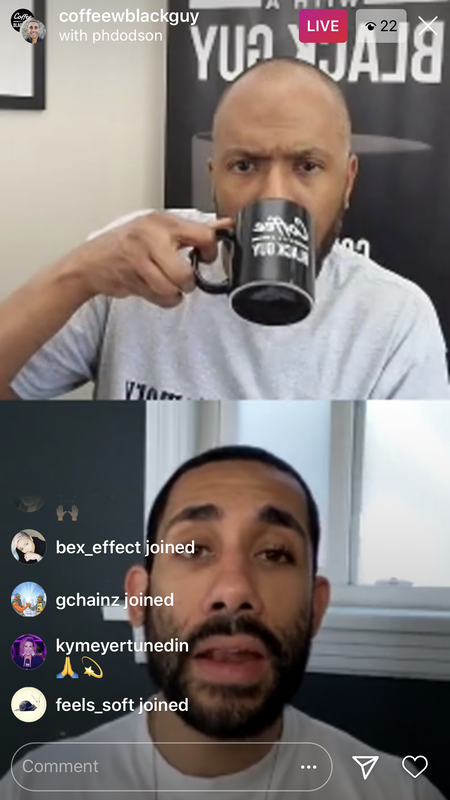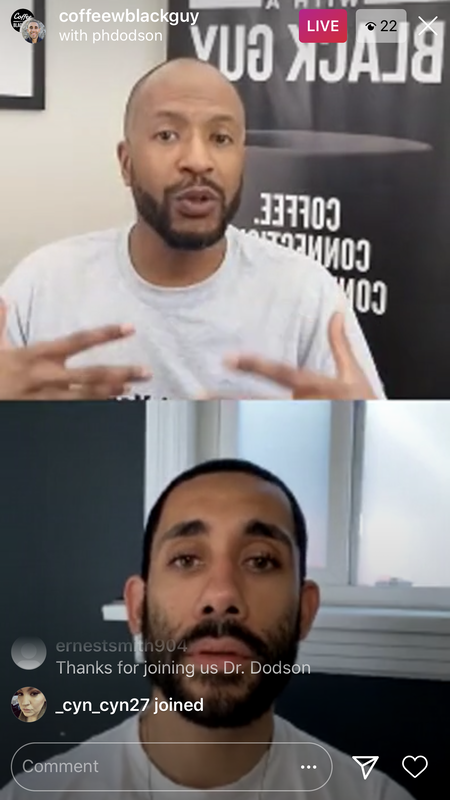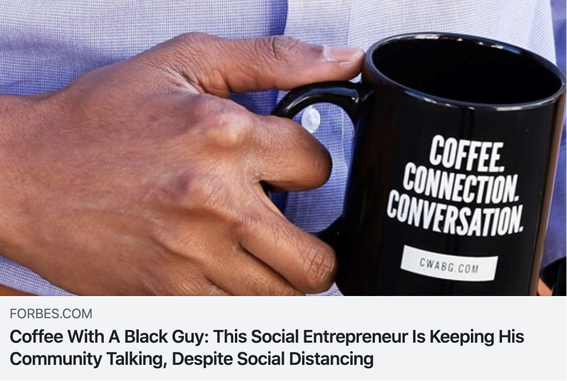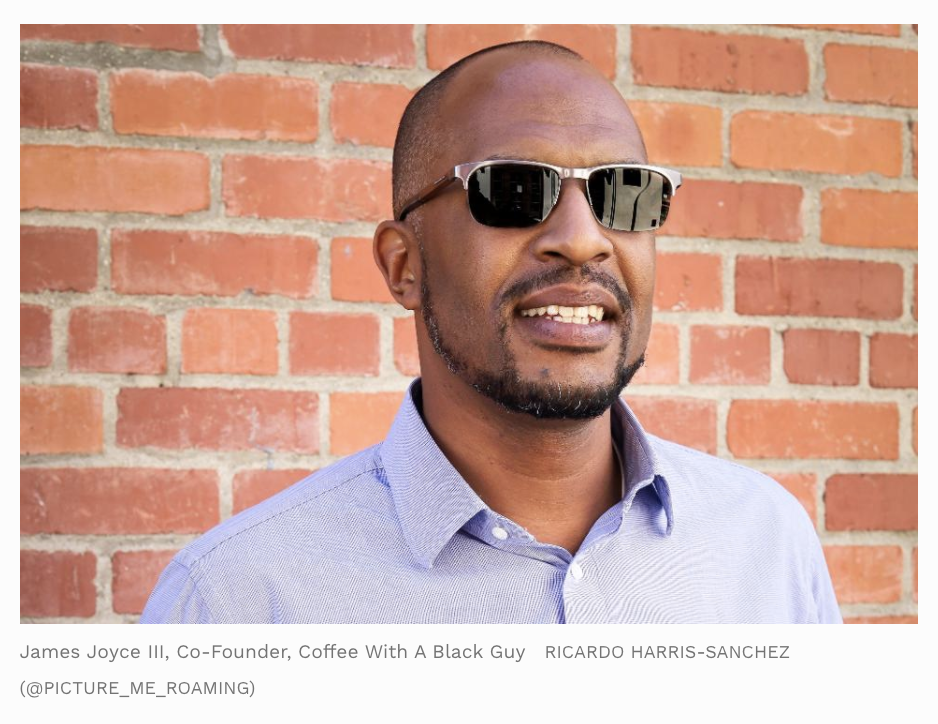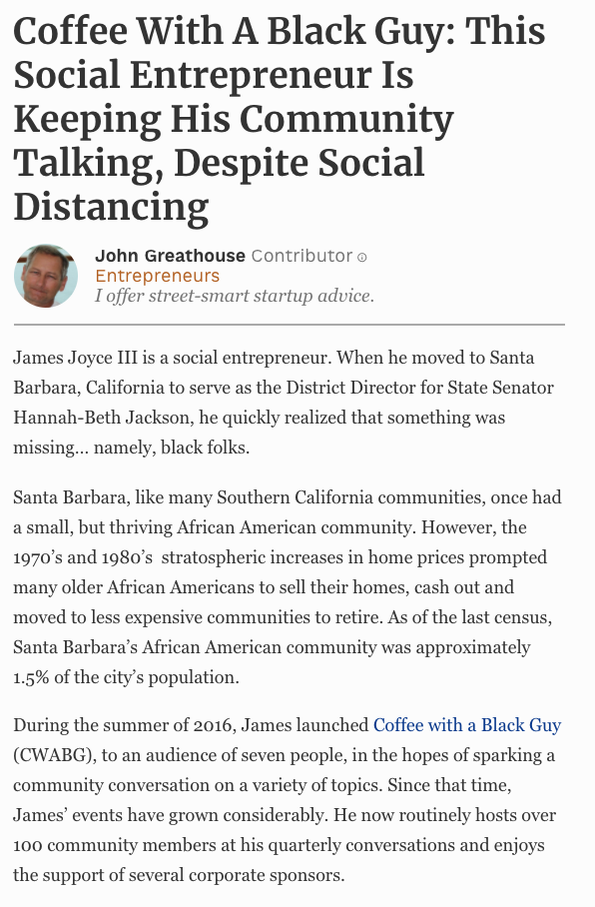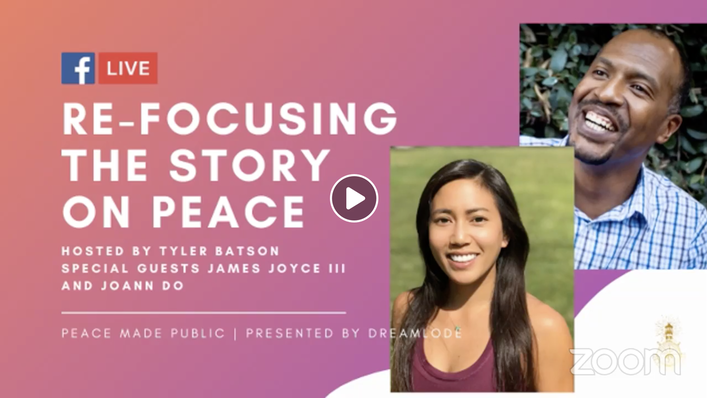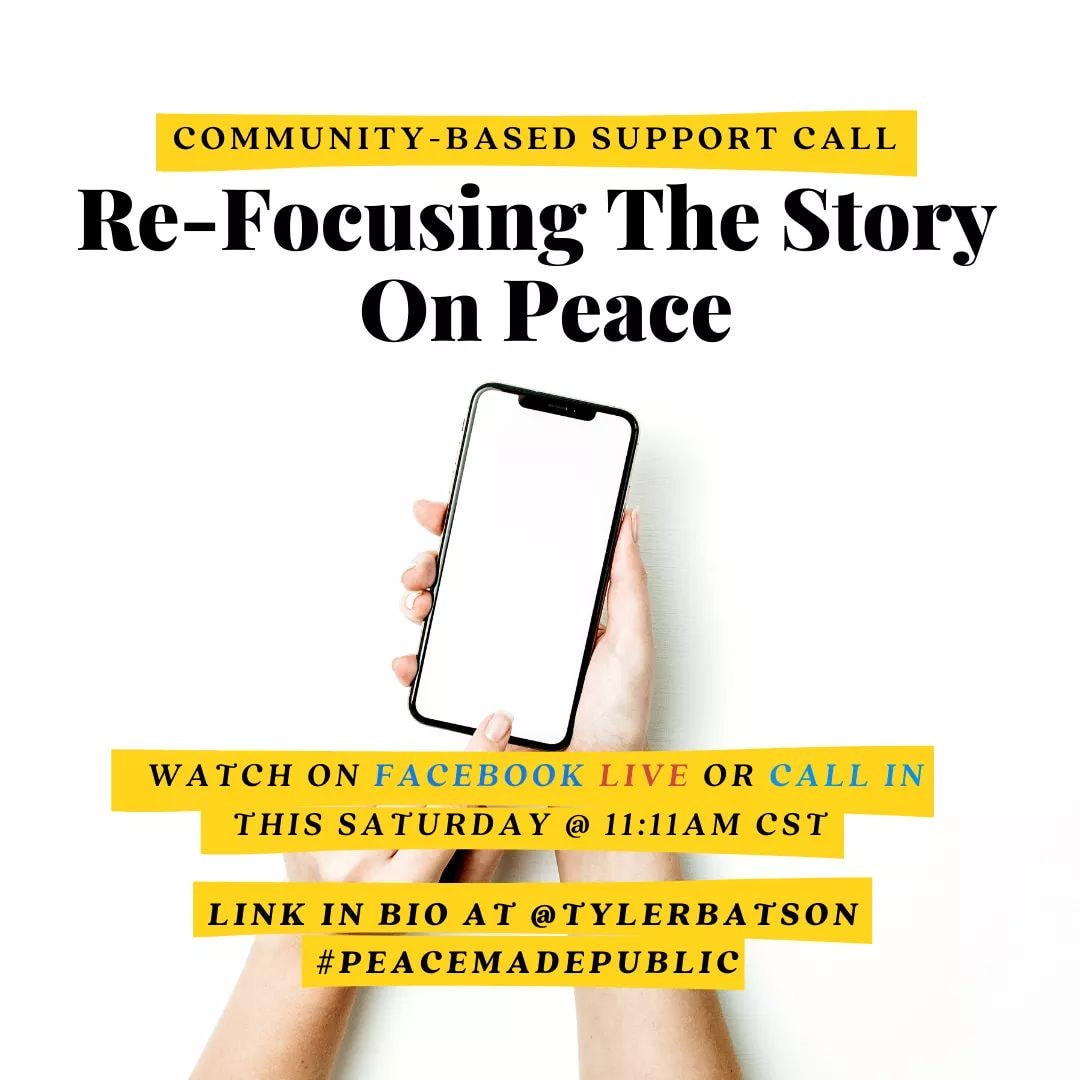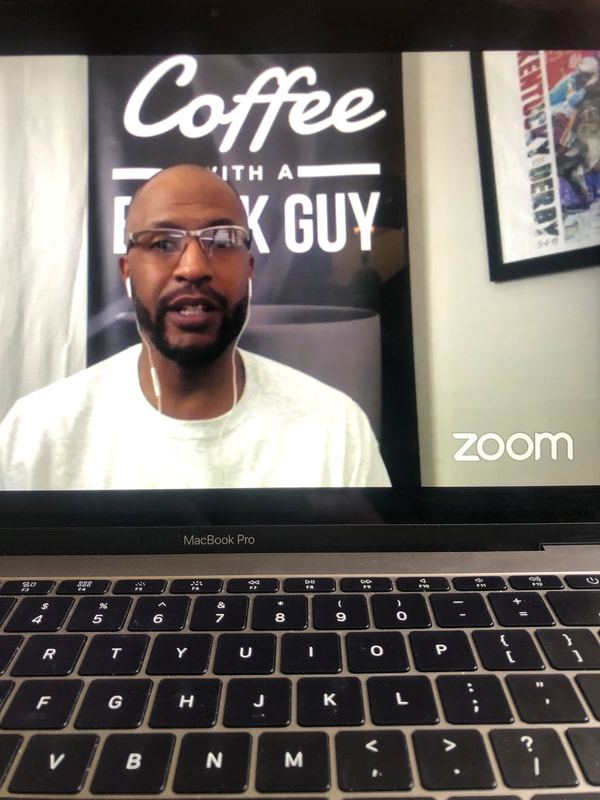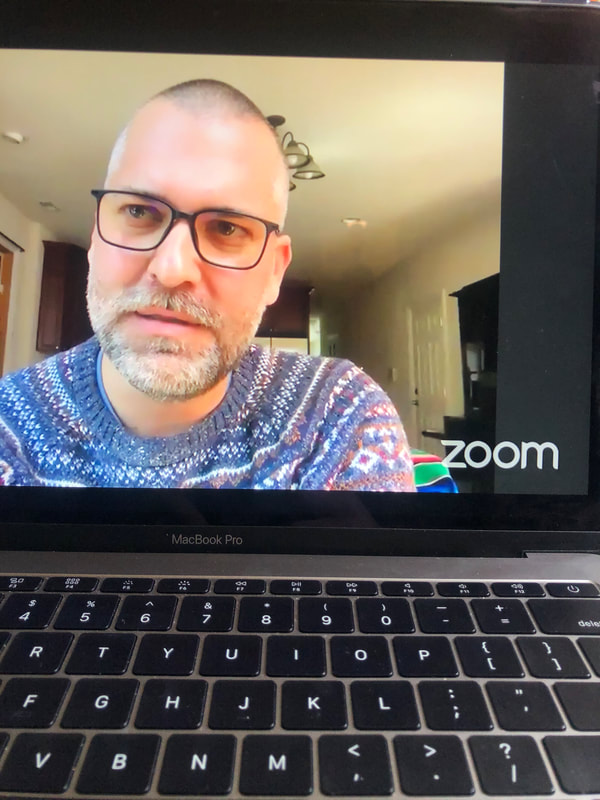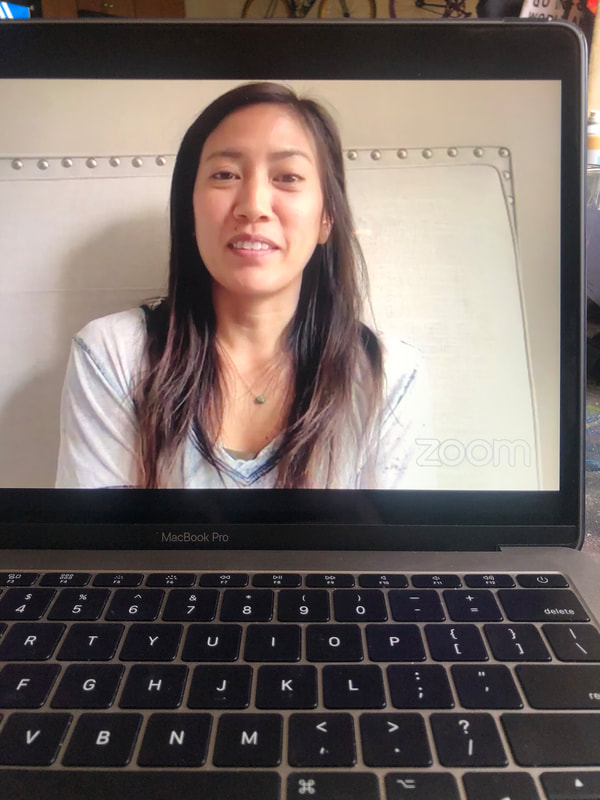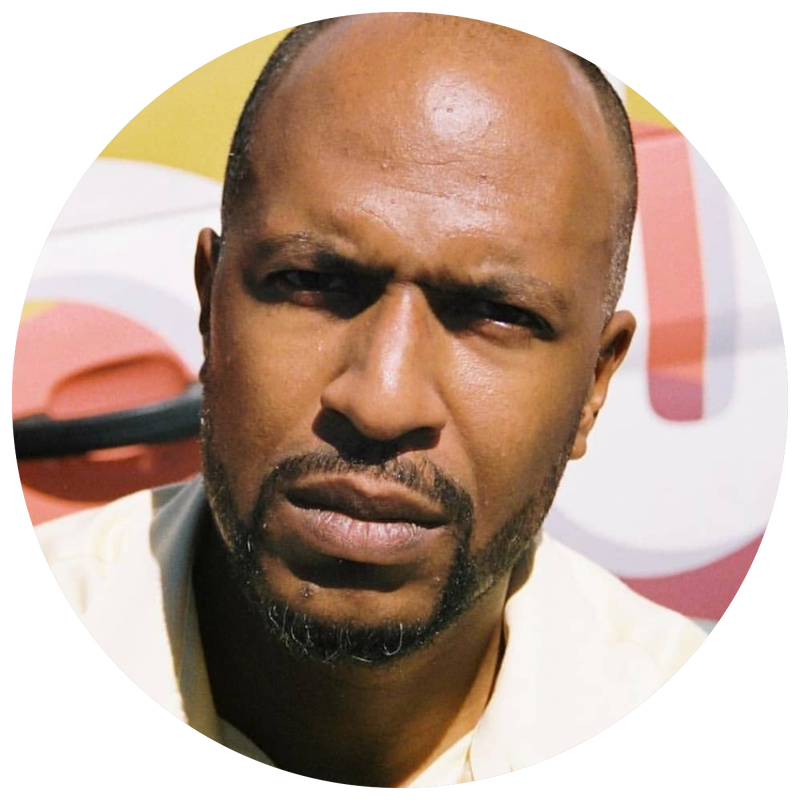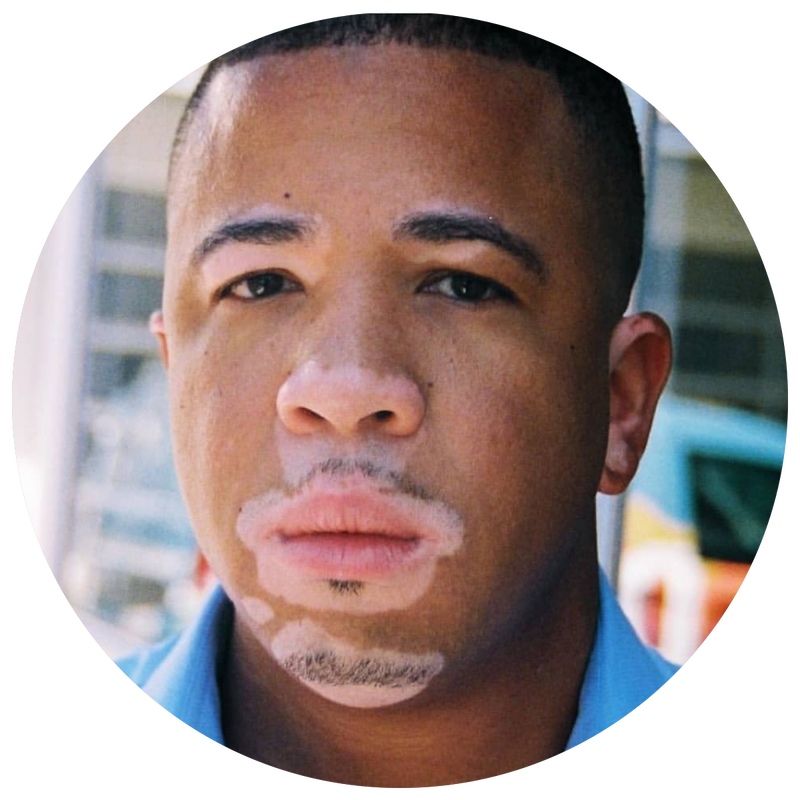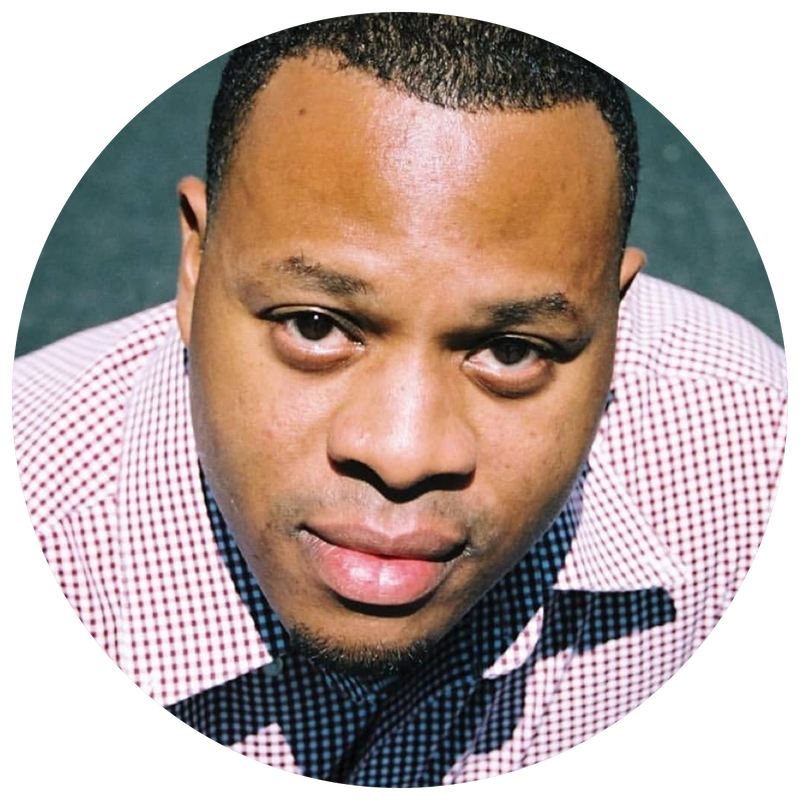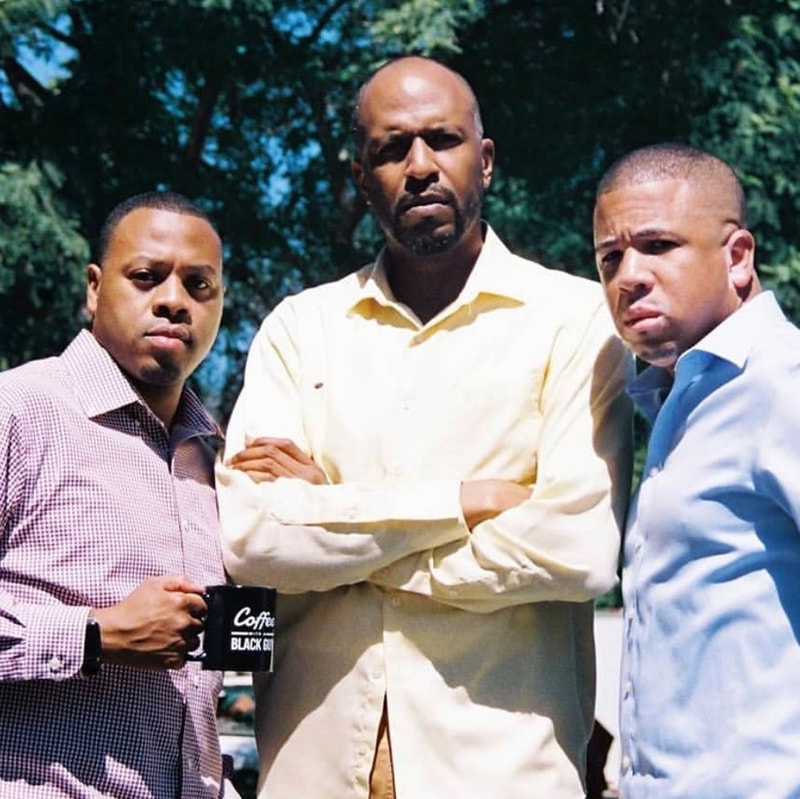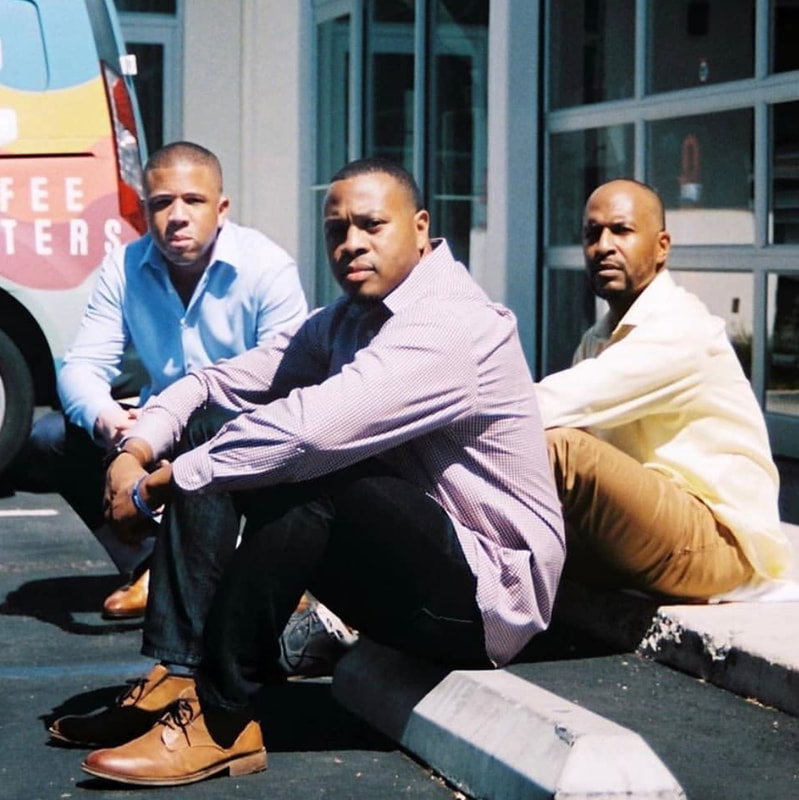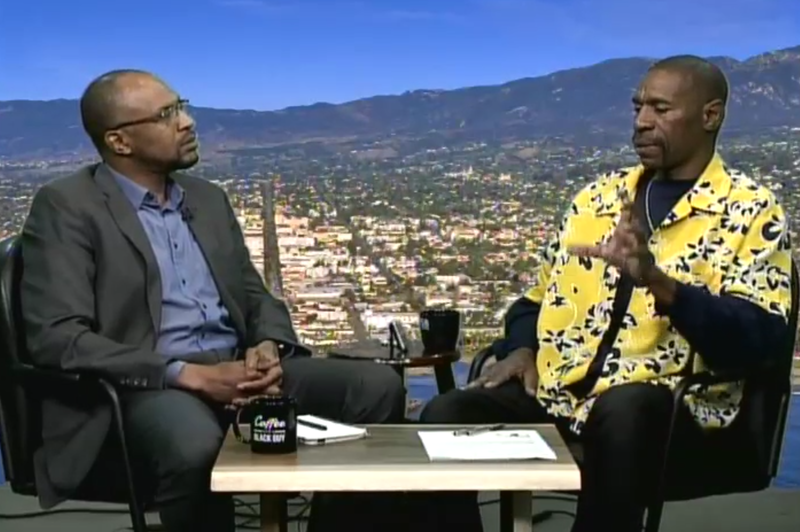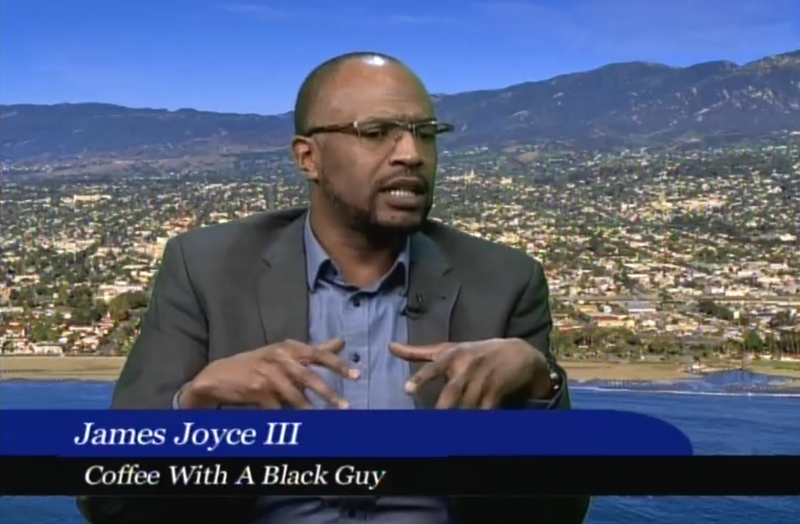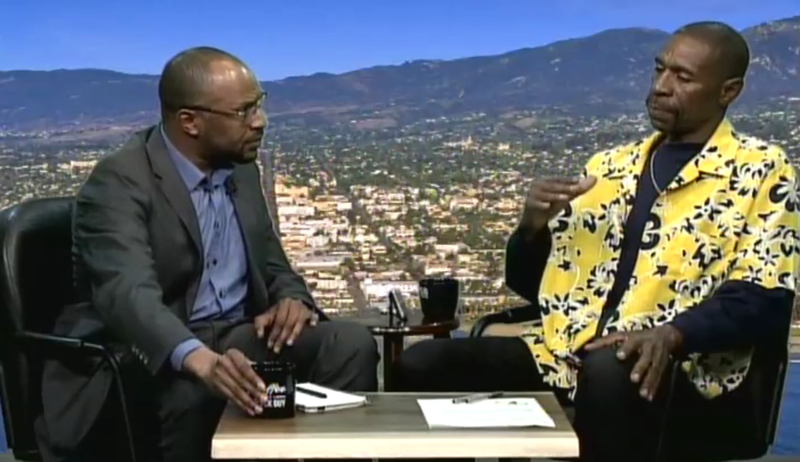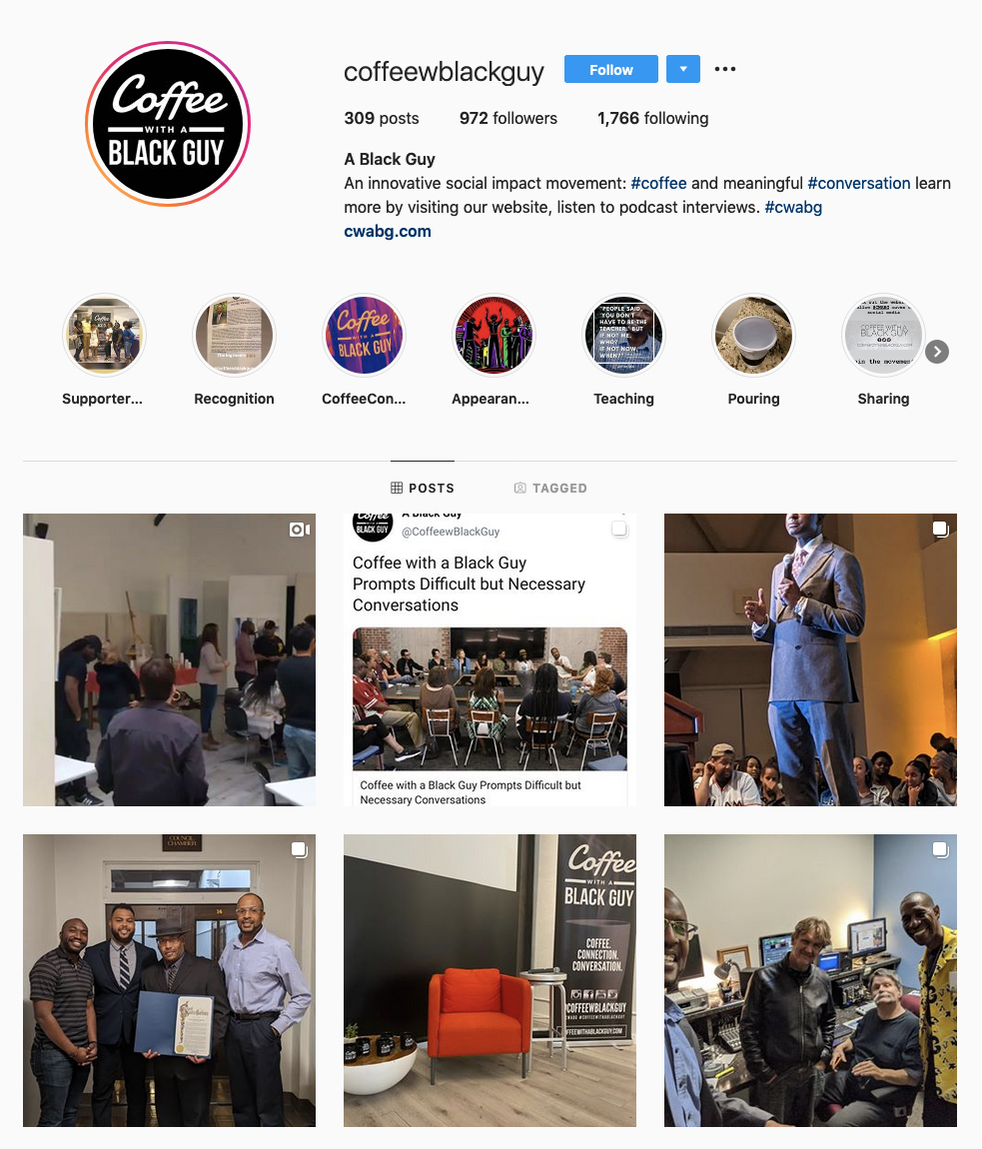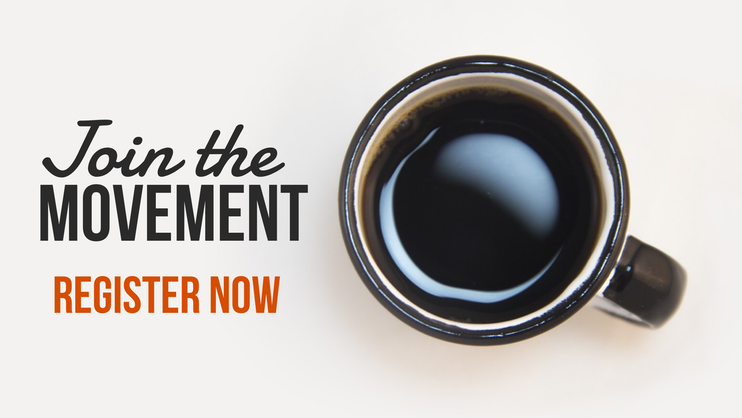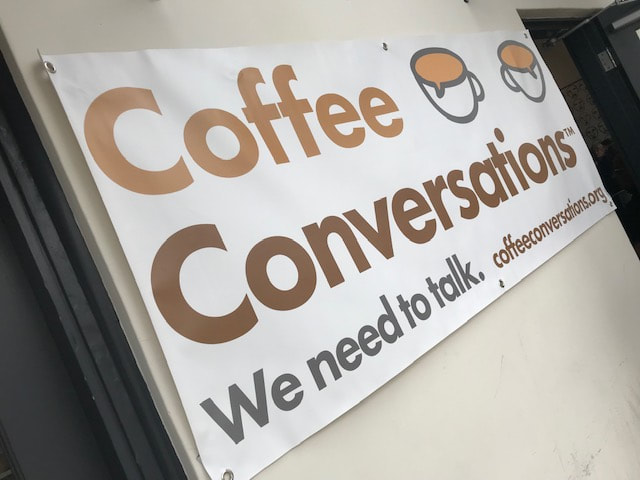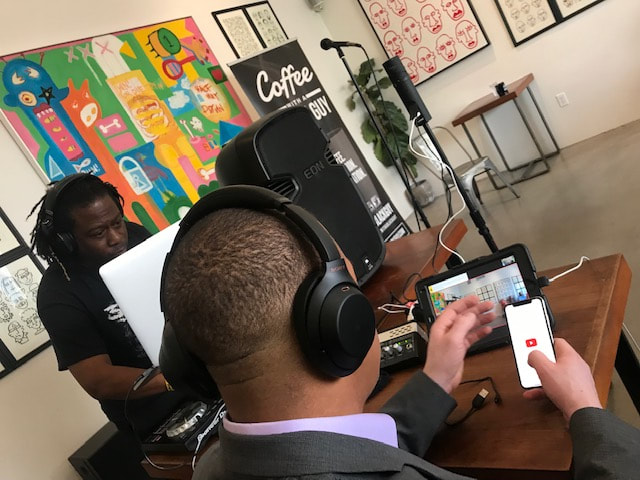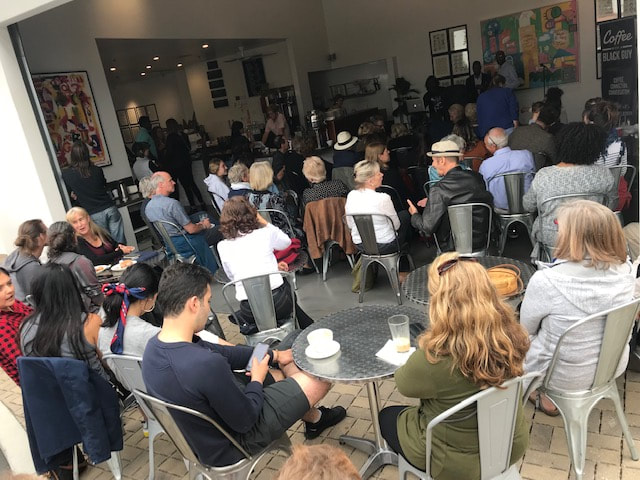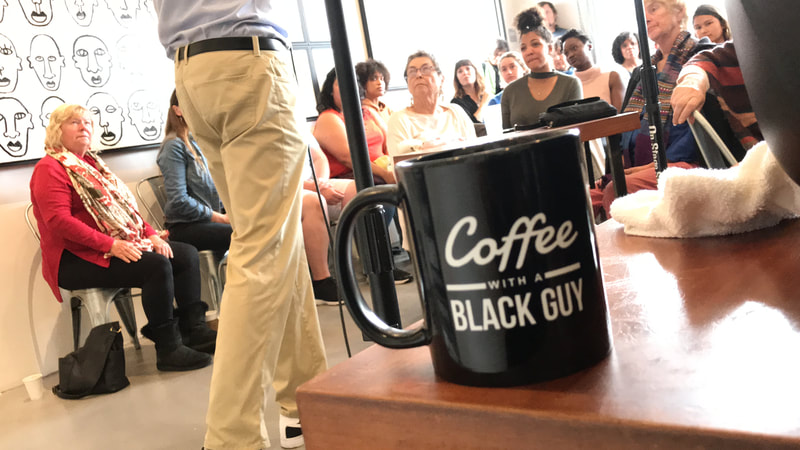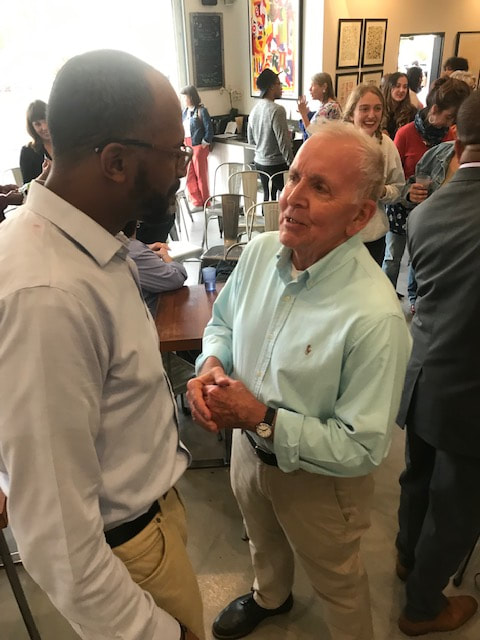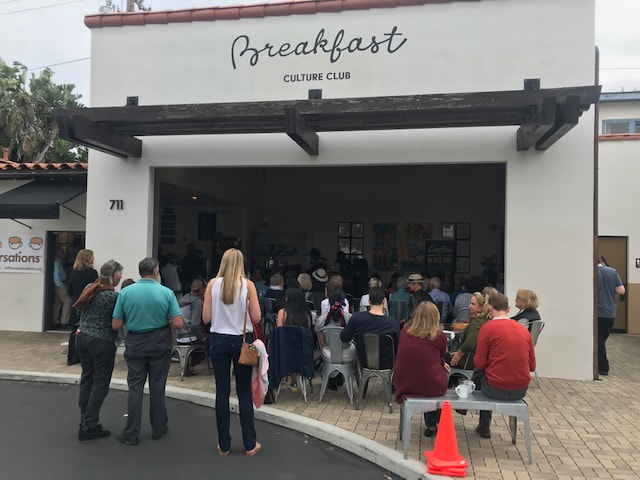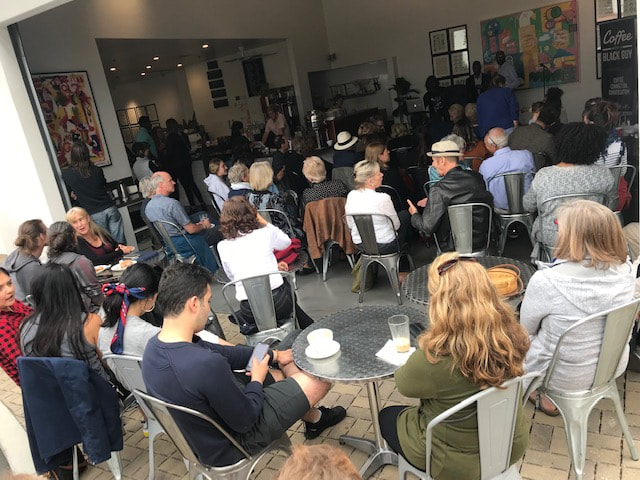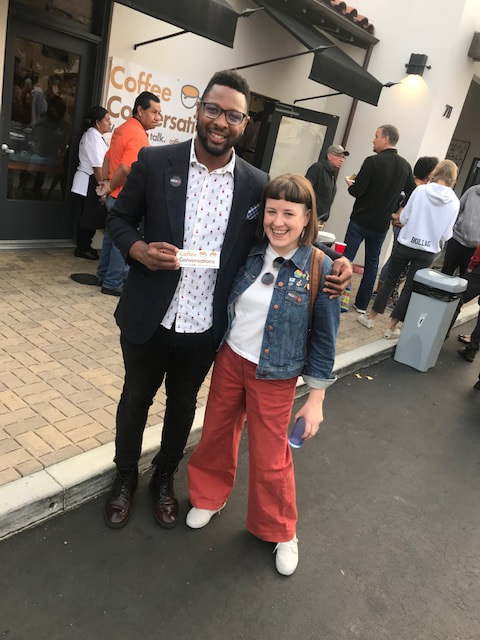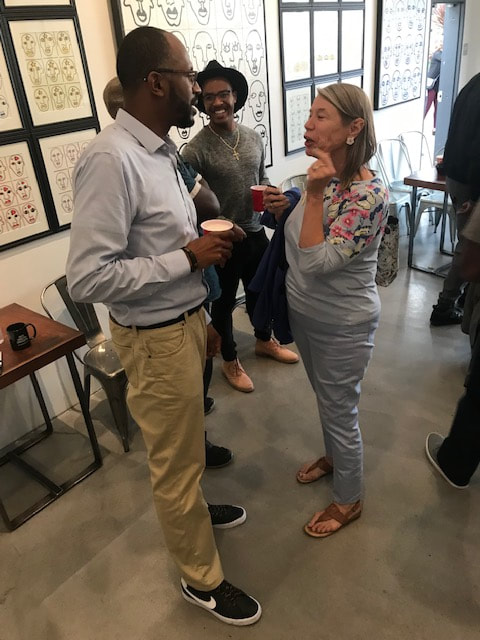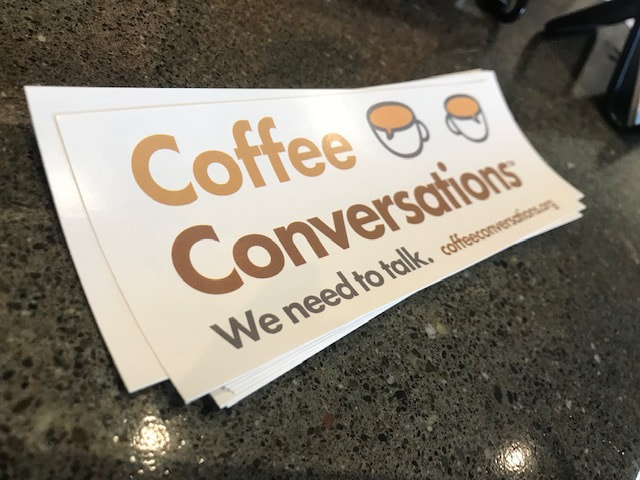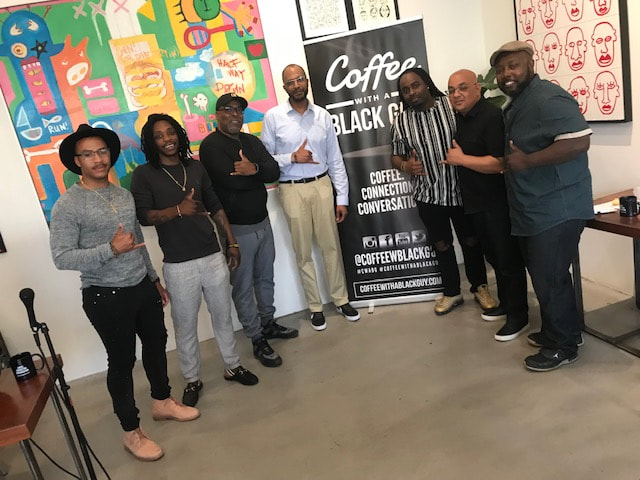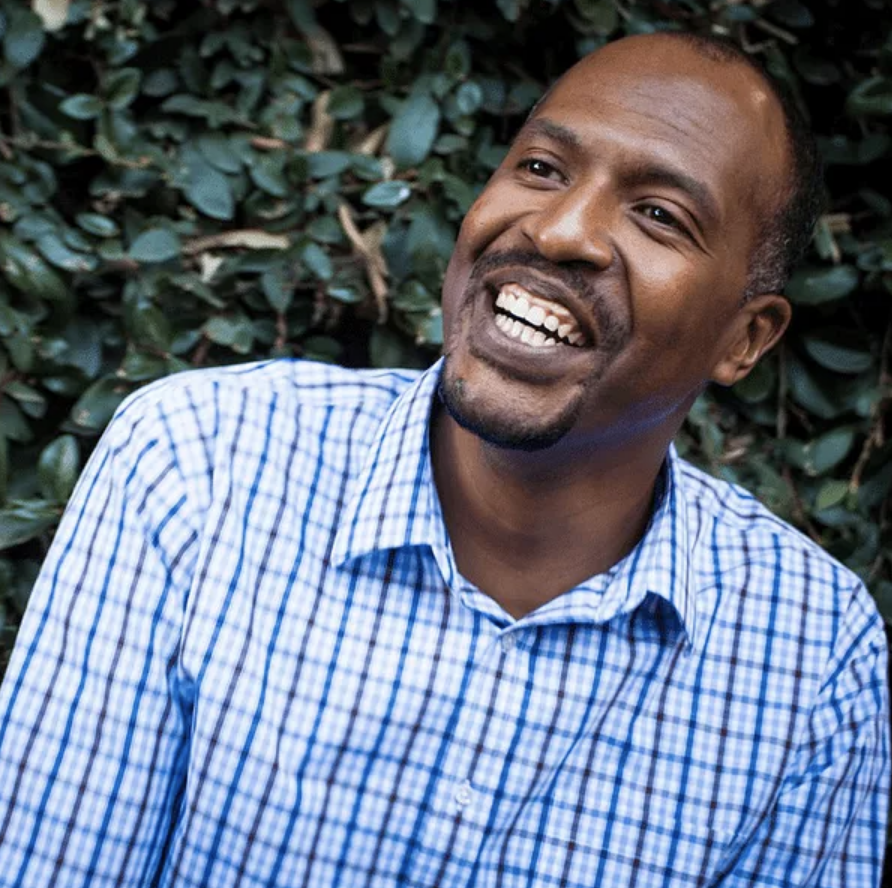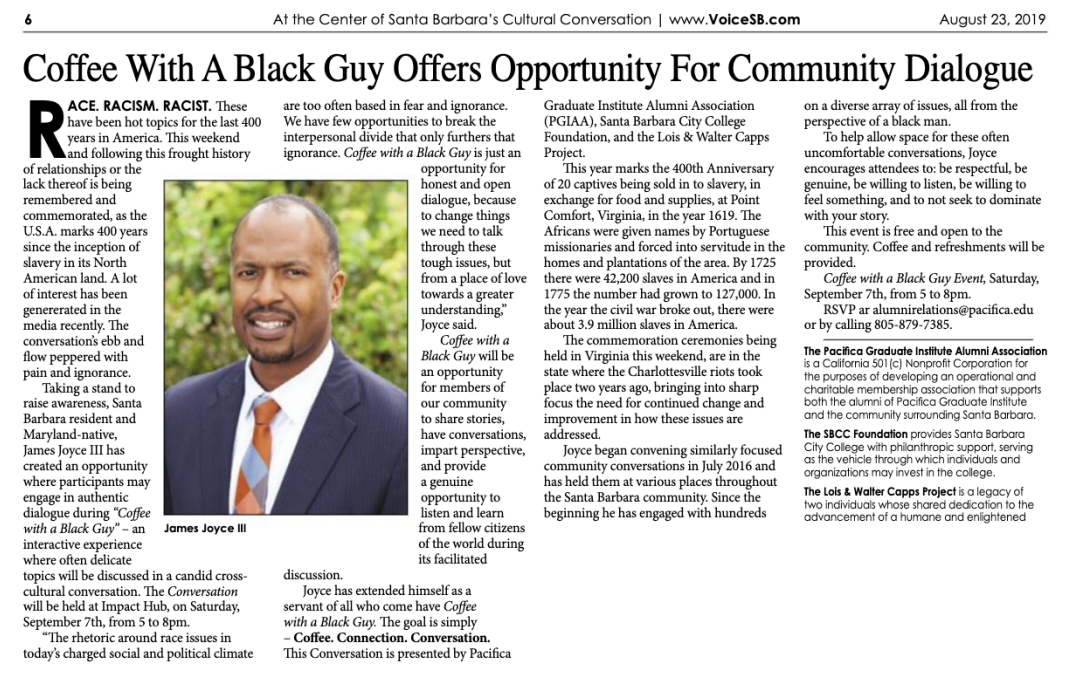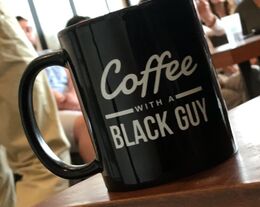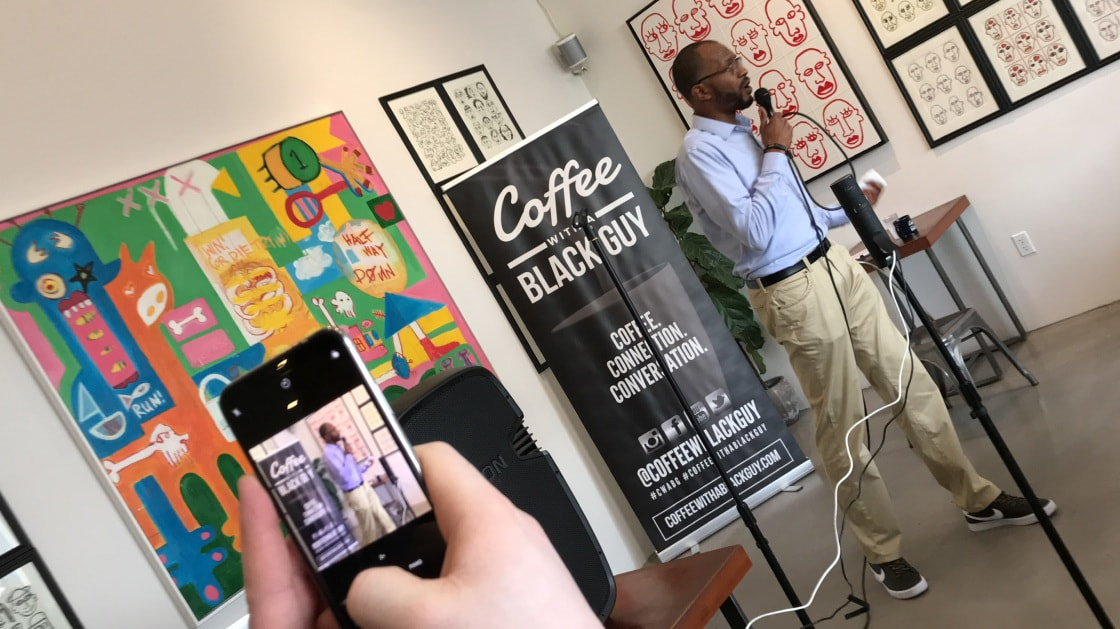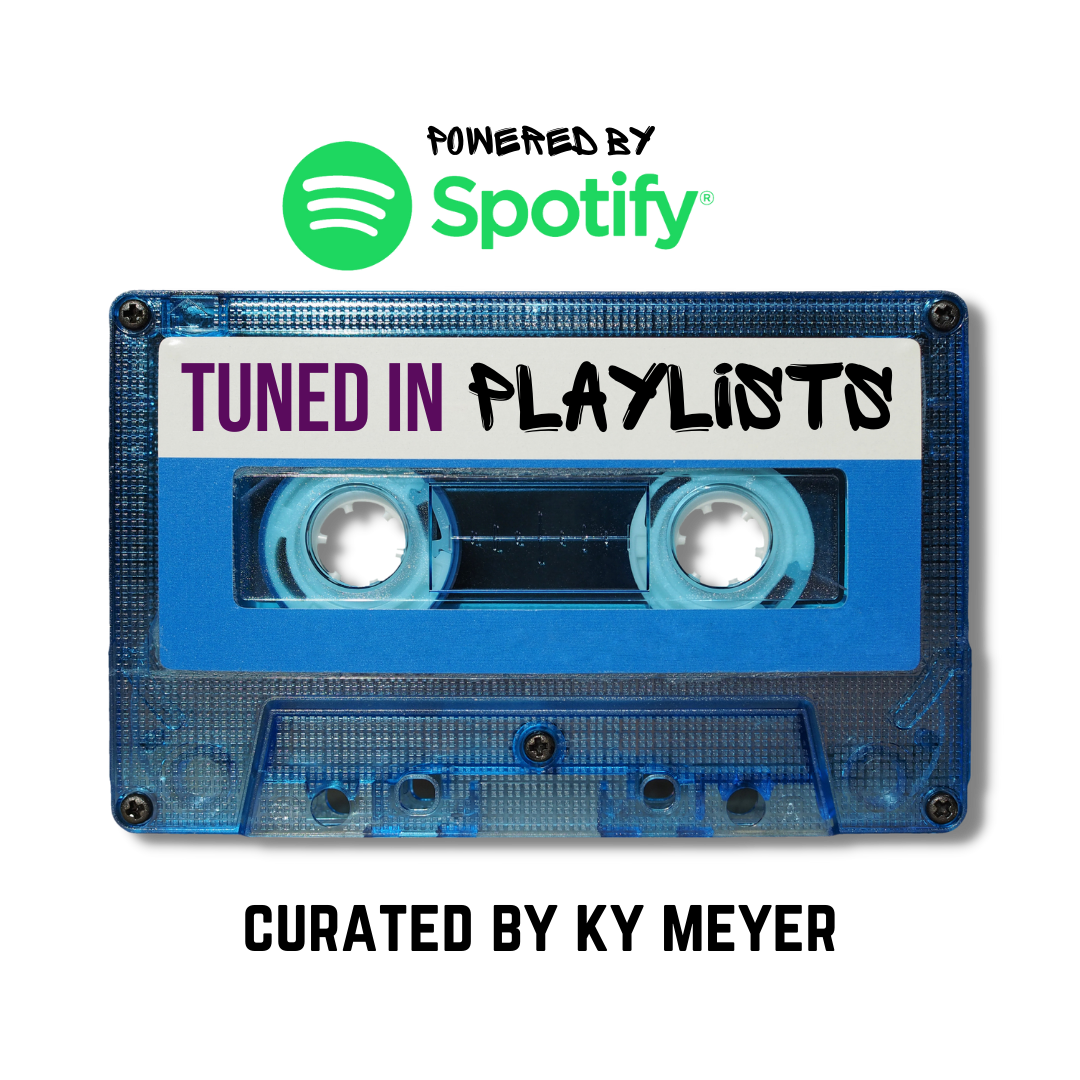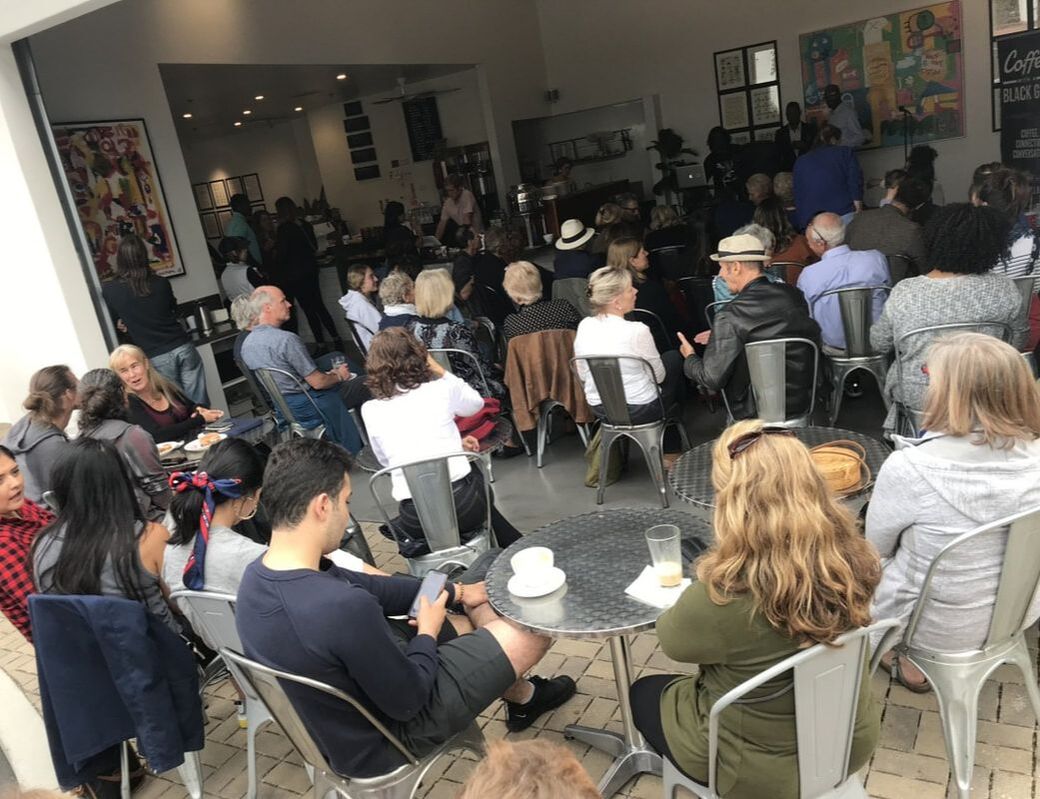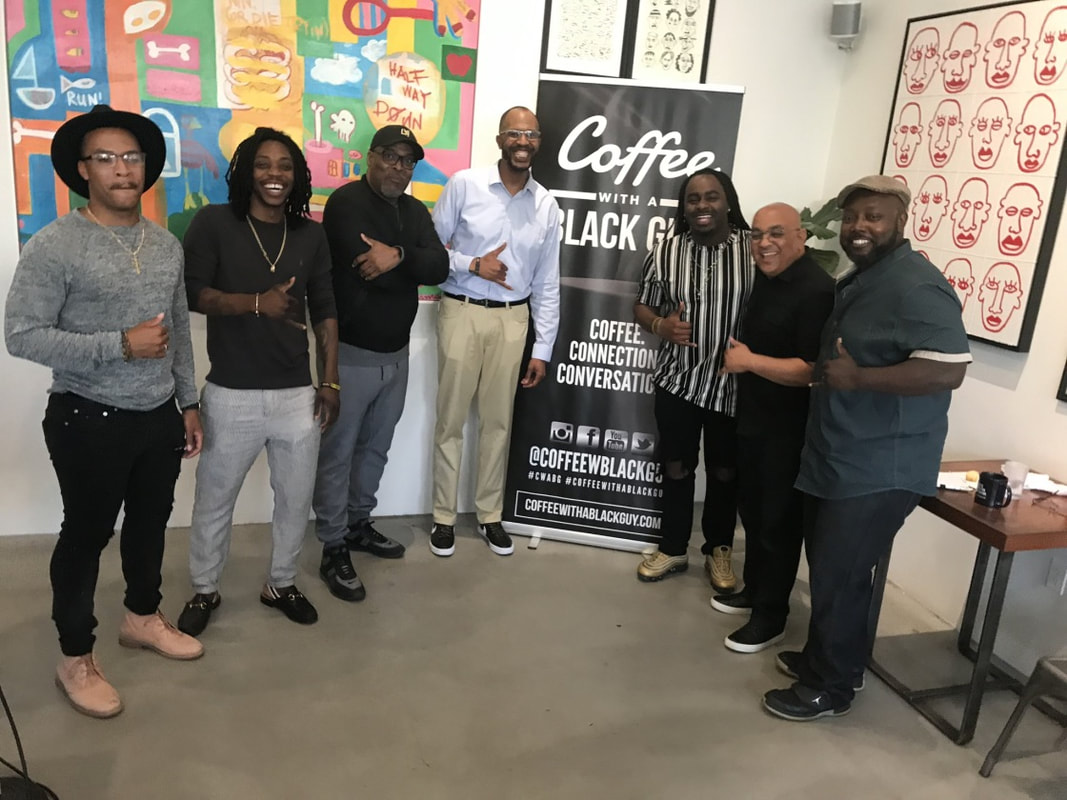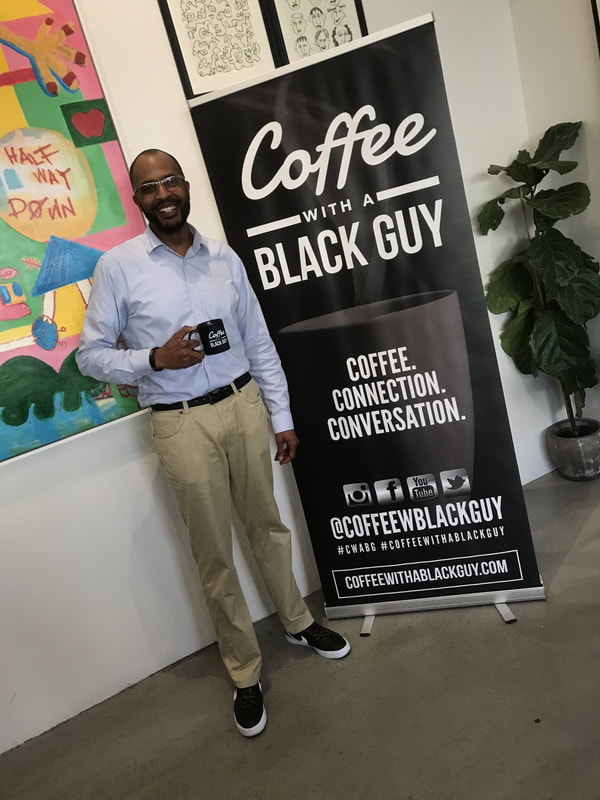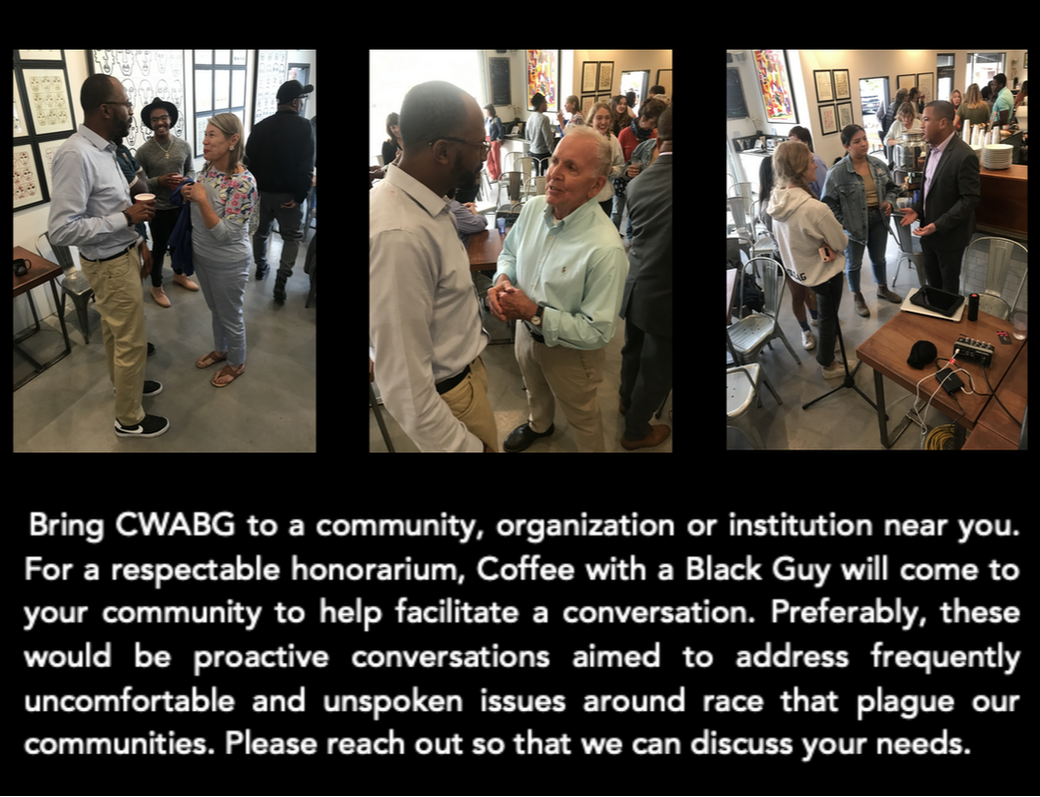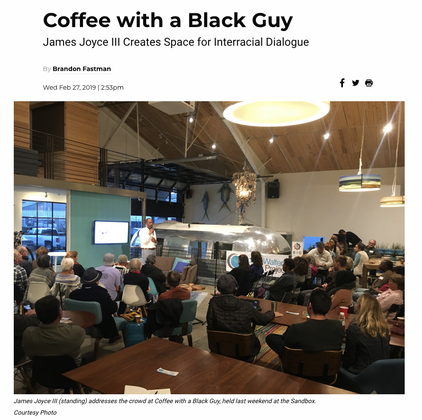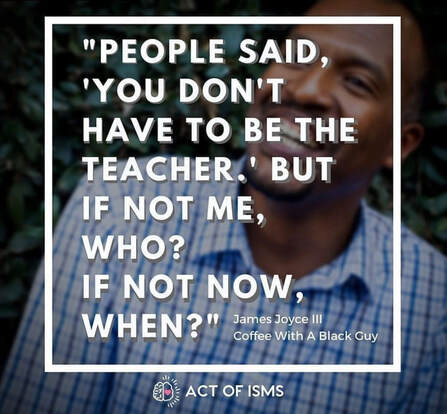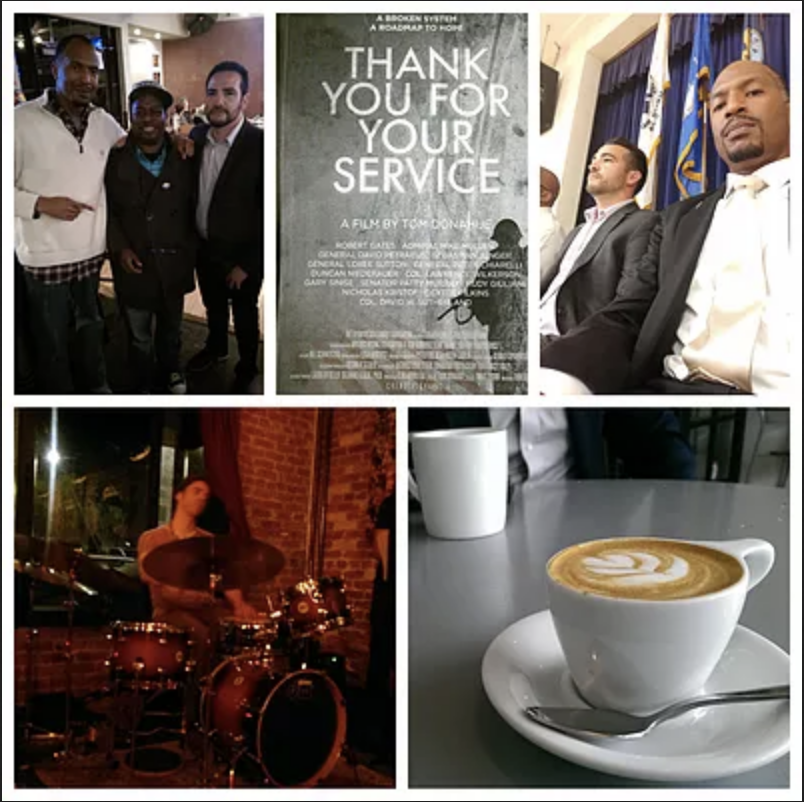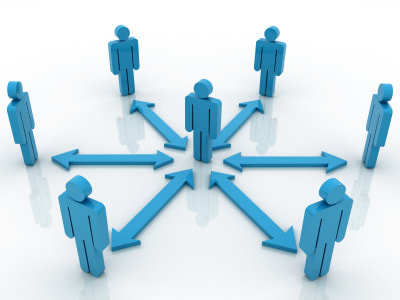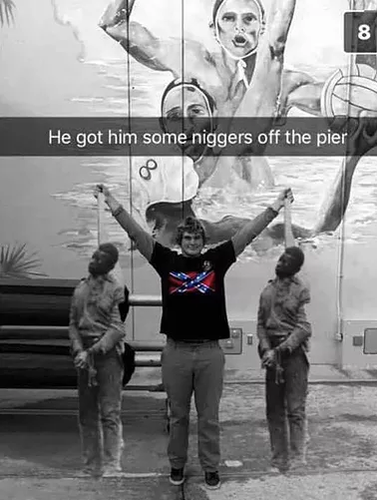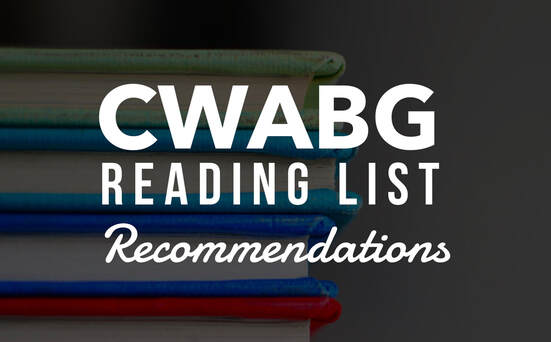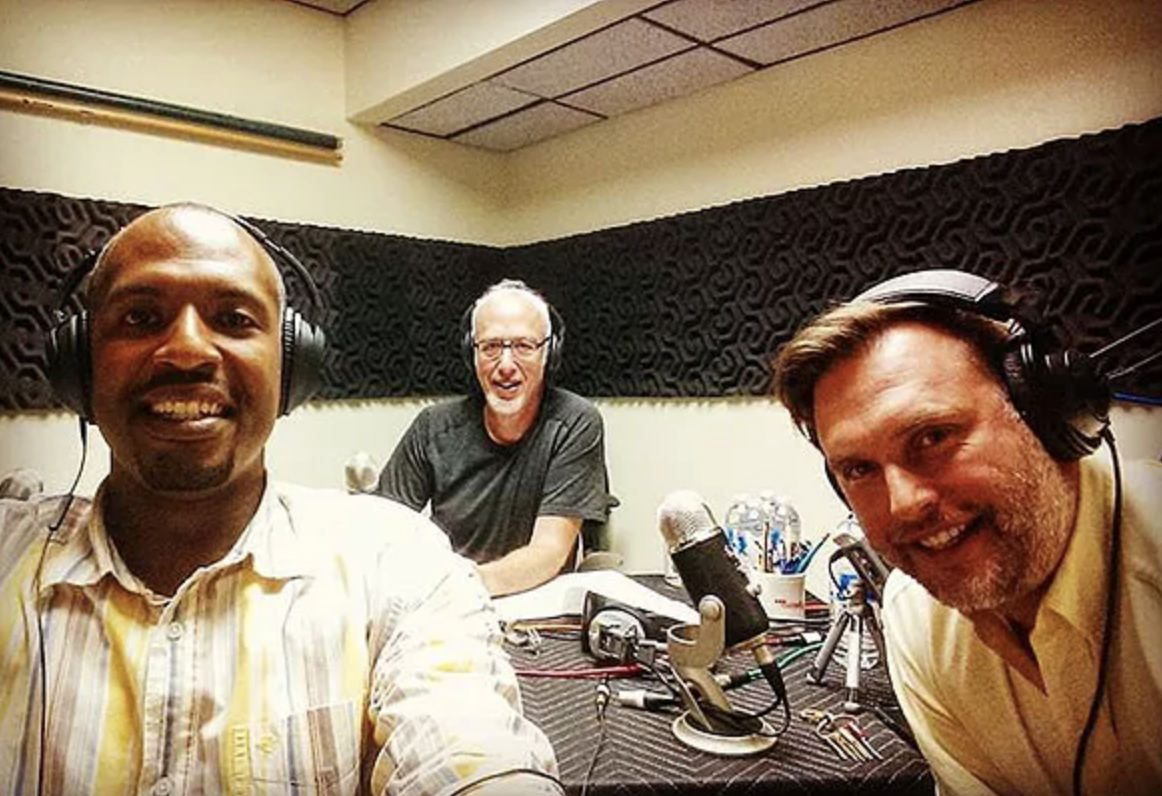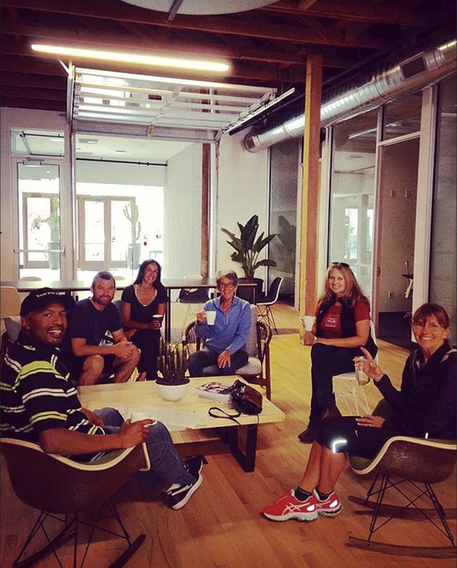|
COFFEE WITH A BLACK GUY is an innovative social impact movement that seeks to merge the tactile and digital worlds to bring greater understanding, compassion, empathy and love in our shared global community. The idea is that black men who are willing, share their experience and open themselves for better understanding of our shared, yet, diverse experience and background. With all the racial tumult going on in the nation & world these days, the rhetoric, the valid points peppered with both pain and ignorance; this movement started with one black man extending himself as a servant of all to hold Coffee with a Black Guy office hours. These sessions are a time to share stories, have conversations, impart perspective or just listen and learn from fellow citizens of the world. These conversations began following months of racial and ethnic tumult in American society and beyond, culminating with the trifecta of events in Baton Rouge, Minnesota and Dallas in early July 2016. CWABG looks forward to bridging a gap with you soon. |
- YOU'RE INVITED -
|
Your continued support helps Coffee With A Black Guy build conversations and resources to help mend and develop communities in need of cultural balance. CWABG is strengthened through community and corporate sponsorships. Your generous donation helps fund our mission. Thank you for making a difference. -Team CWABG
|
|
We'd like to thank Dr. Milo Dodson for joining CWABG Founder James Joyce III to talk about some strategies and framing to help address our mental health during the Covid_19 era. There were several resources discussed during the nearly hour long conversation. We have listed many of them here. And if you missed the conversation from April 25, 2020 you can watch a slightly edited version of the Instagram Live conversation here.
A few key take-aways: - Be okay with being still and taking the space to heal - Be kind to yourself - The philosophy of Ubuntu — I am because we are Visit Dr. Dodson @PhDodson at www.phdodson.com Apps — Dr. Dodson mentioned two apps Headspace and Calm. Other online resources mentioned worth checking out:
There are several other culturally relevant resources such as Therapy for Black Girls that aims to de-stigmatize mental health and organizations such as NAMI (National Alliance on Mental Illness) that have been doing work and connected to a plethora of other useful resources. We also encourage you to seek out your local information where you are located. We recommend searching for the web site of your County's Behavior health or wellness department. For example, here is Ventura County (or in Spanish) and Santa Barbara County in California. And please, if you are feeling distressed and may consider doing something permanent reach out to the National Suicide Prevention Lifeline at 1-800-273-8255 (and a great song by Maryland native Logic further aiming to popularize our mental health). |
Location: Santa Barbara, CA | Photos by Camila Lemere
|
|
|
Watch Now: CWABG Live Stream from Yoga Soup
|
|
|
Coffee Talk: The Buzz
Coffee convos to enrich your life
Take a look back at the packed house inside Breakfast Culture Club in Santa Barbara, California, where James Joyce and his interactive Coffee With A Black Guy experience brought together community for a wonderful evening.
|
Coffee. Connection. Conversation.
Meet James Joyce III, founder of 'Coffee With A Black Guy'
With all the racial tumult going on in the nation & world these days, the rhetoric, the valid points peppered with both pain and ignorance; this movement started with one black man extending himself as a servant of all to hold Coffee with a Black Guy office hours.
These sessions are a time to share stories, have conversations, impart perspective or just listen and learn from fellow citizens of the world. James looks forward to bridging a gap with you soon. |
Get to know Coffee with a Black Guy
If you're curious, skeptical or in anyway wondering what Coffee with a Black Guy is all about, check out a live recording of our conversation at The Sandbox in Santa Barbara in early 2019. On Feb. 23rd, more than 100 people representing a cross section of the greater Santa Barbara area voluntarily showed up to the stylish creative co-working space to engage in a conversation about race and perspective with aims towards a better understanding. Run time: about 1 hour 25 minutes.
|
Podcast interview: CWABG on ACT OF ISMS
|
April 5, 2018
CWABG Founder and Chief Visionary Officer, James Joyce III was invited to help kick off a new visionary podcast, Act of Isms, which aims to create connection and compassion through conversation and action. LA-based hosts, Tyler Batson and Maria Prichard share with their listeners about Coffee with a Black Guy for their premier episode. If you have listened and are now here, welcome! If you have yet to give it a listen, you can check it out here: or download "ACT OF ISMS" in all of your popular podcast apps, including itunes (http://bit.ly/ACTOFISMS_iTunes) / (http://bit.ly/ACTOFISMS_Podbean) This one goes beyond CWABG, so be sure to subscribe to learn about other radical acts of compassion happening throughout the country. Leave comments and reviews and share, share, share! |
IMPACTFUL AUDIO:
|
Simple tenants towards a collective American:
|
A Practical and Effective Means of Improving Intergroup Relations
|
March 13, 2017
Coffee with a Black Guy's founder, James Joyce III recently spoke to a Counseling Psychology seminar class of Dr. Tania Israel at the University of California, Santa Barbara. One of the doctoral students, Meg Boyer, posted a question about Contact Theory regarding the CWABG concept. That genuinely inquisitive student researched and shared the following blurb following the classroom visit: "When successful organizations are born, their developers are not always consulting literature bases. Often they are born out of the spark of an idea. Many successful programs may find, however, that their strategies are supported by Psychological theory and research, albeit unintentionally. Such is the case with James Joyce's "Coffee with a Black Guy" program. The simple premise -- providing the opportunity for people in the community to have coffee with a black guy (himself) -- is actually strongly backed by the psychological theory of prejudice reduction called Contact Theory. Widely credited to Gordon Allport in his 1954 book The Nature of Prejudice, Contact Theory asserts that simple contact -- just day-to-day interactions or conversations -- between members of different groups can reduce intergroup prejudice [1]. This theory has been shown to apply to a variety of circumstances, including reducing prejudice towards racial and ethnic groups [2]. More recent research has shown that intergroup contact not only improves attitudes towards others members of that specific out-group even members of out-groups not involved in the contact [3]. My. Joyce's program, then, is supported by Contact Theory as a practical and effective means of improving intergroup relations." |
Margaret Boyer, Counseling Psychology Doctoral Student — University of California, Santa Barbara (2/2017)
[1] Allport, G. W. (1954). The nature of prejudice. Reading, MA: Addison Wesley. [2] Amir, Y. (1976). The role of intergroup contact in change of prejudice and ethnic relations. Towards the elimination of racism, 245-308. [3] Pettigrew, T. F., & Tropp, L. R. (2006). A meta-analytic test of intergroup contact theory. Journal of personality and social psychology, 90(5), 751. If you support the idea of Coffee with a Black Guy and want to help further support the concept, you can donate here: www.paypal.me/CWABG |
|
Painful Reminder - Ventura, CA
January 15, 2017 Two students at Buena High School in Ventura, Calif. posted overtly racist photos on social media days before the annual recognition of the Dr. Martin Luther King Jr. Day and have been disciplined by school officials. But Facebook finds the photo too offensive to post on the Coffee with a Black Guy page on their domain and removed a well performing post that helped notify members of the community of the disgustingly racist act. According to media reports, school officials learned of the photos the morning of Friday, Jan. 13, 2017. That following Saturday, the local newspaper, the Ventura County Star had an article about the incident, but did not include the actual image. We learned of the incident and posted the image and a link to the article: Buena students face discipline over racist photos, with a message that this is a painful reminder of the sentiments and thoughts within our community. This post was active on our page for about 8 hours before Facebook removed it citing violation of user agreement. During that time, the post had reached more than 5,700 individuals and been shared nearly 30 times. It had ignited conversation in the comments — from suggestions for punishment to the early organizing of actions among community organizers. Conspicuously, the same image remains active elsewhere on Facebook While I understand the whole mantra, my house-my rules, I feel this was appropriate use of the platform to notify and engage the community about something that had happened. Coffee with a Black Guy is an appropriate venue to further that vital community discussion in person, outside of the virtual space. So I am sharing the information and context here. In hopes that we #neverforget and do not allow prescribed rules of appropriateness stifle out ability to grow. This was among the topics discussed at the Coffee with a Black Guy Session on Sun., Jan. 15th. |
Media coverage of incident involving Buena High School:
http://www.vcstar.com/story/news/local/communities/ventura/2017/01/13/buena-students-face-discipline-over-racist-photos/96564160/ https://www.facebook.com/watch/?ref=external&v=10154938341945859 |
|
Political Reflections;
time, territory and a death note January 10, 2017 By James Joyce III In the fall of 2008, as a burgeoning reporter with a few gigs under my belt, I took off from Yakima, Wash. and parachuted into Toledo, Ohio to work at The Blade as the paper’s education reporter. I landed there days after candidate turned President Barack Obama had sauntered past my would-be cubicle to sit in a conference room with The Blade’s publisher and editorial board. I would only learn of this after the fact, but that breakroom story immediately hammered the importance of this relatively new territory to me, in the grand scheme of presidential politics. Weeks into the job, I volunteered to help out with weekend pool reporting. That is, where reporters jump into a pool together to see if the sharks are biting today. I joke, but not far from the truth. Toledo saw a lot of political activity that year, if you all recall the shiny-headed ‘Joe the Plumber,’ well he lived about a mile down the road from where I stayed while working at The Blade. So on the Sunday before election day the paper needed me to jump in the pool to cover the Sarah Palin machine of the day as her vice-presidential campaign gaggle made stops in Canton (a northeast Ohio town of about 73,000, known for being the home of the pro football hall of fame) and Columbus. Before leaving the house that morning, I recall writing a note and placing it in my top drawer. The note, written on pages ripped from a spiral reporter’s notepad, carried a message that explained — in brief — that if anyone was reading it, I had been fully aware of the potential outcome of the day, that my demise was quite possible and in my mind anticipated given I was a black guy going to a Palin rally in 08. The note concluded with a simple declaration, that I was okay with my fate as part of the struggle should that be my end. And off I went in to the heart of the red machine whose engine was revving with racist undertones and hatred. You see, this was the birth of the Tea Party and at the time we had no idea what this thing was to become, or how quickly it could get there. But my job was to be in the pool and pull nuggets from the scene to fold into the more seasoned reporters stories for well rounded coverage for our readers.
That day, the only other people of color in my sights at each of those rallies were members of the Secret Service detail, many with whom I made awkward eye contact a time or two, as we both had jobs to do and we knew the realities of the tension. However, much to my surprise, when Palin stood before the pool — she chose to not jump in that day — what I saw was a woman of stunning western beauty, sans the puffy hair that was a throwback to my birth decade. (Shout out to the Big Hair 80’s) She was pleasing to the eye and provided a sense of visual comfort in what was otherwise full immersion in a sea of discomfort for this budding reporter. But observe and report I did, as that was my task, my job. |
And that tingly feeling I got from her beauty was immediately squashed as soon as she opened her mouth with that squeaky voice and folksy talk. While the words departed little from the campaign rhetoric of the time, in hindsight, the death note may have been a bit over anticipation. To my delight, folks that I talked to that day were pleasant, respectful and answered my often barrage of questions spanning from their hopes for our country to the reason for attending the spectacle of a campaign rally. The reality was that America, red-white America, wasn’t quite ready to return to be mainstream with their racism again quite yet; they were still incubating that part of their character. Again, this was Tea Party in its infancy and only subtle utterances of racism were emerging, not mass articulation and expression as we see today. Those were the days where a bold neighbor or two would just hang an Obama scarecrow from a noose in a tree in their yard. They hadn’t quite advanced to the candidate him or herself inciting the crowd to harass and violently treat those who were deemed other.
Now, as we enter into a Trump presidency, we have mass articulation of racism, misogyny, sexual assault and a general indifference for protocol and political decorum. And when I leave my cave nestled in the relatively progressive enclave of Santa Barbara, I do not feel much more comfortable than I did the day I dove into the red-white American pool filled with baby sharks. Although my current environment may seem like a liberal bubble, as we grow into Trump’s America, I am quickly reminded that even in Santa Barbara (Pres. Fitz Grant from the fictional Scandal has a house here after all, or I think Mellie got that in the divorce), our daily newspaper (the words are printed on newsprint after all) was the first in the country to endorse Donald Trump for President. They had supported him in the primaries too. That means that there is support for that decision somewhere flowing within our enclave, or at least a willingness to turn a blind eye to such a rash decision. This has been my reminder that these elements exist across America and have been seemingly emboldened by the election of their chief clown. Many of days, particularly in the past year, I have shed the exterior bravado that I am conditioned to possess and I have wept for our country. Wept at the seemingly systematic and avoidable killing of unarmed and legally armed black and brown brothers and sisters. Wept at the actions of a one too many deranged gunmen and wept at the continual denial to do anything to address this plague to public health. I've wept at the painful wounds and division, largely based on race and class, that festers in society. However, through it all, it remains my hope that love or at the very least sharing a space, eye contact or a conversation with someone who may not look like or think like you is the way moving forward, despite personal vulnerabilities. I remain hopeful that I will once again be surprised by the overwhelming good in people, because “hate is too great a burden to bear.” ... and video that I actually captured on my phone from the Canton portion of the day, or the belly of the beast: |
|
CWABG on the 805 Connect Podcast:
Making Connections by being genuine August 30, 2016 A few weeks back James Joyce III sat down for a conversation about #coffeewithablackguy with Mark and Patrick who host the podcast 805 Conversations. There, James shared a bit more about this idea, its genesis and background. In a brisk 51—1/2 minutes, the conversation hits on a range of topics, including some basic journalistic tips applicable for better human interaction, a nod to how Virtual Reality could also play a role and cold hard lessons on race early in life. Lots to chew on in this conversation, we'd like to hear your thoughts or feedback. Connect, follow and let us know your thoughts. |
Reflections from the first #coffeewithablackguy
July 25, 2016
It started with a seemingly simple question. Once I had my coffee in hand and exchanged pleasantries with the few folks starting to gather, one emboldened attendee got the ball rolling; “So, what’s it like being a black guy in Santa Barbara,” he asked. From that point on, the next two hours were filled with a steady flow of intimate conversations about a variety of topics, sharing stories, learning about the projects that members of my community are working on at work. Others casually listened before carrying on with their day. The concept is simple: given all the racial tumult in the world, particularly the United States, complex issues with deep history are boiled down to soundbites and rhetoric, the hashtag wars cloaked behind digital components that further the interpersonal divide, some valid points peppered with both pain and ignorance — with all this going on and the sense of hopelessness that goes with it, let coffee be our common ground and build from that. I decided that the least I could do was to extend myself, first of all as a servant of all, to be able to answer questions, share perspective, have conversations or simply listen to understand. |
Loosely modeled off of the idea of Coffee with a Cop that was launched by the Hawthorne (CA) Police Department in 2011, the idea of Coffee with a Black Guy, allows black men who are willing to equally extend themselves in a neutral environment to have conversations, address false narratives and bring better understanding to our communities.
After putting myself out there and saying I was going to be at said location at said time, I wasn’t quite sure what to expect or how to prepare. How many people would show? What would we talk about? What if someone wants to talk about an uncomfortable topic? This uncertainty in my mind, drove me to think through my personal story with racism. That is, I wrote out bullet pointed personal experiences that have helped shape my awareness of race relations, specifically as they pertain to interactions with law enforcement.
One example: during my formative middle school years I grew up internalizing the false narrative that black men were an endangered species. An Endangered Species. That was supposed to mean that I was more likely to end up in jail or dead by age 18 than I was to graduate from high school, let alone go to college. At the time, I did not know it to be a false narrative rather one that resonated with the images around me. This was the era of Boyz n the Hood, Regulators and my peers were getting jacked over Jordans and Starter jackets.
This is the sentiment behind perspectives shared during Coffee with a Black Guy. Not for sympathy and “woe is me,” but to share for compassion, for better understanding and perspective. Things I see our world could certainly use more of.
For a peek into the answer of the igniting question “what’s it like being a black guy in Santa Barbara” check me out on Instagram @coffeewblackguy
After putting myself out there and saying I was going to be at said location at said time, I wasn’t quite sure what to expect or how to prepare. How many people would show? What would we talk about? What if someone wants to talk about an uncomfortable topic? This uncertainty in my mind, drove me to think through my personal story with racism. That is, I wrote out bullet pointed personal experiences that have helped shape my awareness of race relations, specifically as they pertain to interactions with law enforcement.
One example: during my formative middle school years I grew up internalizing the false narrative that black men were an endangered species. An Endangered Species. That was supposed to mean that I was more likely to end up in jail or dead by age 18 than I was to graduate from high school, let alone go to college. At the time, I did not know it to be a false narrative rather one that resonated with the images around me. This was the era of Boyz n the Hood, Regulators and my peers were getting jacked over Jordans and Starter jackets.
This is the sentiment behind perspectives shared during Coffee with a Black Guy. Not for sympathy and “woe is me,” but to share for compassion, for better understanding and perspective. Things I see our world could certainly use more of.
For a peek into the answer of the igniting question “what’s it like being a black guy in Santa Barbara” check me out on Instagram @coffeewblackguy
